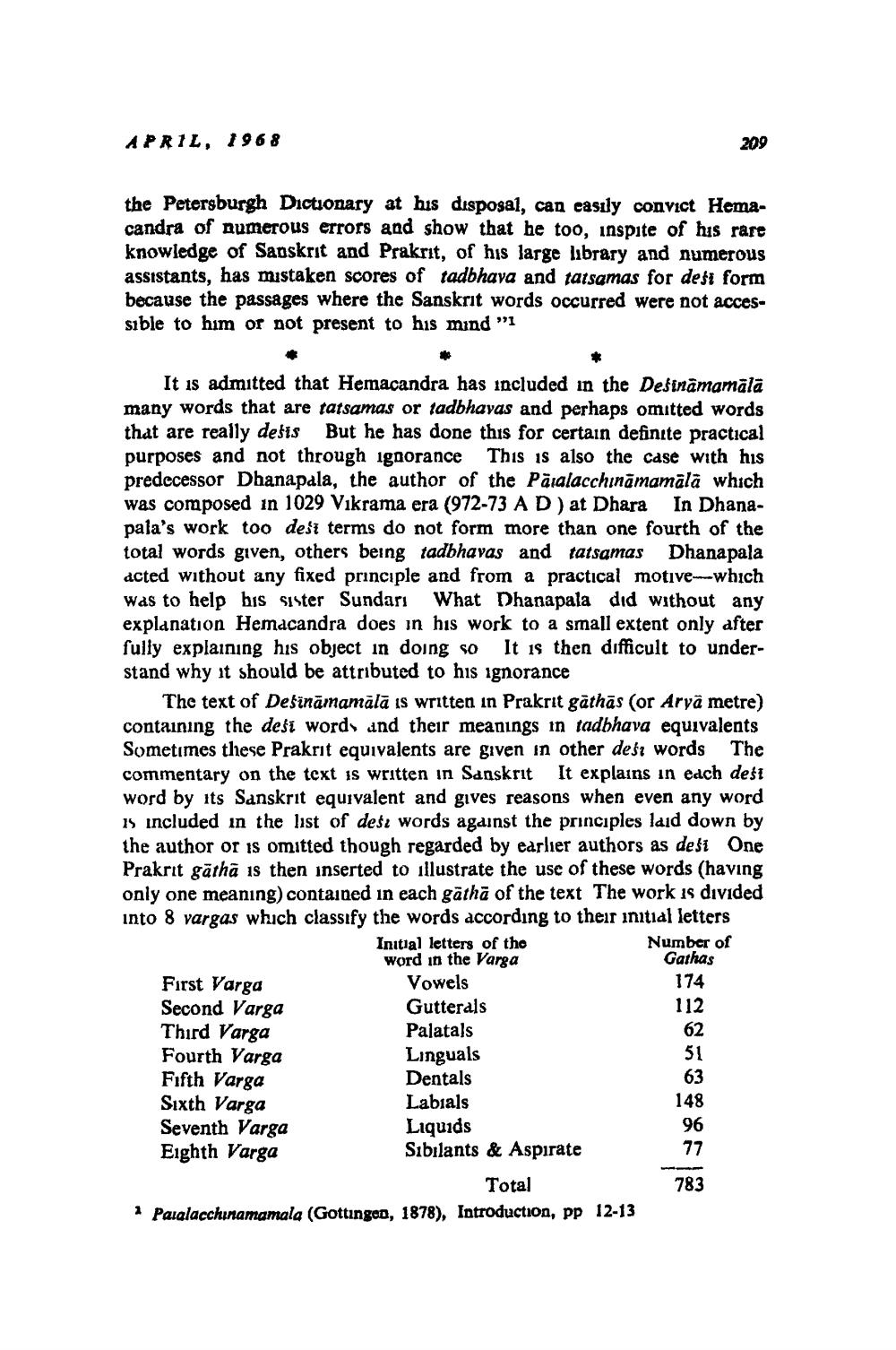________________
APRIL, 1968
the Petersburgh Dictionary at his disposal, can easily convict Hemacandra of numerous errors and show that he too, inspite of his rare knowledge of Sanskrit and Prakrit, of his large library and numerous assistants, has mistaken scores of tadbhava and tatsamas for desi form because the passages where the Sanskrit words occurred were not accessible to him or not present to his mind "
*
It is admitted that Hemacandra has included in the Desinamamālā many words that are tatsamas or tadbhavas and perhaps omitted words that are really desis But he has done this for certain definite practical purposes and not through ignorance This is also the case with his predecessor Dhanapala, the author of the Paralacchināmamālā which was composed in 1029 Vikrama era (972-73 A D) at Dhara In Dhanapala's work too dest terms do not form more than one fourth of the total words given, others being tadbhavas and tatsamas Dhanapala acted without any fixed principle and from a practical motive--which was to help his sister Sundarı What Dhanapala did without any explanation Hemacandra does in his work to a small extent only after fully explaining his object in doing so It is then difficult to understand why it should be attributed to his ignorance
First Varga Second Varga
Third Varga Fourth Varga
The text of Dešīnāmamālā is written in Prakrit gāthās (or Aryä metre) containing the desi words and their meanings in tadbhava equivalents Sometimes these Prakrit equivalents are given in other dest words The commentary on the text is written in Sanskrit It explains in each dest word by its Sanskrit equivalent and gives reasons when even any word is included in the list of desz words against the principles laid down by the author or is omitted though regarded by earlier authors as desi One Prakrit gāthā is then inserted to illustrate the use of these words (having only one meaning) contained in each gatha of the text The work is divided into 8 vargas which classify the words according to their initial letters
Fifth Varga
Sixth Varga Seventh Varga Eighth Varga
Initial letters of the word in the Varga
Vowels
Gutterals
Palatals
Linguals
Dentals
Labials
Liquids
Sibilants & Aspirate
209
Total
A Paralacchinamamala (Gottingen, 1878), Introduction, pp 12-13
Number of Gathas
174
112
62
51
63
148
96
77
783




